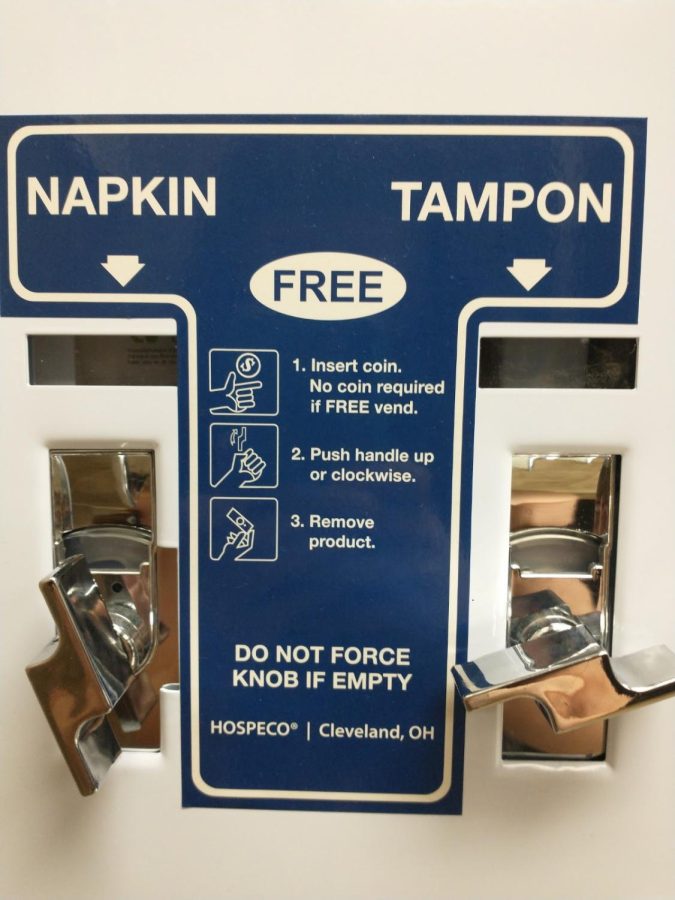Period Products in School: Let’s Talk About It
January 21, 2022
Period poverty: the lack of access to sanitary products, resources, and period health education. Twenty five percent of menstruators experience period poverty globally and adequate resources are not easily available to many. Fifty percent of the world population has, will, or does go through this monthly cycle. So if it’s so prevalent, why is period poverty so prevalent?
You may have noticed the period product dispensers recently put into the bathrooms at EHS. Over 35 tampon and pad dispensers were put into our female and unisex bathrooms in EHS, CTE, and middle school buildings in the district. They are free but not the highest of quality.
The Hive decided to interview our school nurses, Alyssa Jacobs, Kathleen Ready, and Diane Kirson- Glitman, to learn more. My first question that I felt was important to find out was whether or not there would be period products in the boys bathroom next year.
“That would be fine. We aren’t in control of that. We actually were not as consulted on this whole process as one might think” Mrs. Kirson-Glitman replied. The nurses continued with talking about how the idea circulated for a while, that those who need period products shouldn’t have to go to the nurses to get supplies. With as good as having the access is, the supplies have run out a few times. I then asked them, per a request from another student, could we put underwear in our bathrooms as are in younger schools in case of emergencies? They then started looking on Amazon to see if they could get disposable underwear to have in the nurse’s office in a one size fits all situation. Our nurses really care about having supplies available that people feel they might need or want.
After our conversation, the nurses then referred me to Patrick Dattilio, Assistant Director of Facilities, and Garry Scott, Director of Facilities and District Safety. I asked them about changing the dispensers to say ‘Pads’ rather than ‘Napkins’. Many people did not know pads were available because of this outdated wording. They answered by saying that changing the dispenser wording is a very real possibility and something they’d be happy to do. I also asked them about the plans for menstrual products in the male bathrooms. They explained that there has been messaging about the best course of action. While wanting to have products easily accessible to trans students, the district also has to look at cost factors and at the treatment of products if in male bathrooms. There is no funding for menstrual hygiene products in the boys bathroom in 2022 unless pulled from something else, so the likelihood is not large, but not off the table.
Mr. Scott also brought me a copy of the state law coming forth about menstrual products in bathrooms. The EWSD school district is ahead of the game in that regard, and have gotten products into women’s and gender neutral bathrooms before the law is in effect.
In the end, having these menstrual products in our bathrooms is great and a valuable resource for period havers. New labels will hopefully be put on the pad dispensers from ‘Napkins’ and there may be disposable underwear in the bathroom for emergencies. Hopefully, our future holds more programs and laws put in place to reduce and end period poverty globally.












